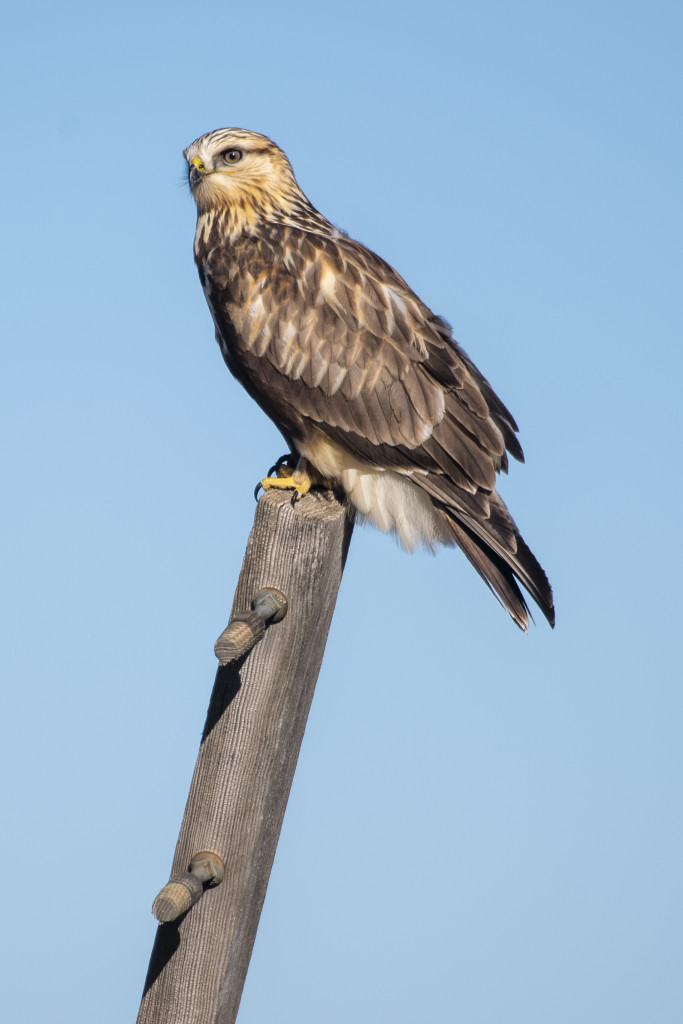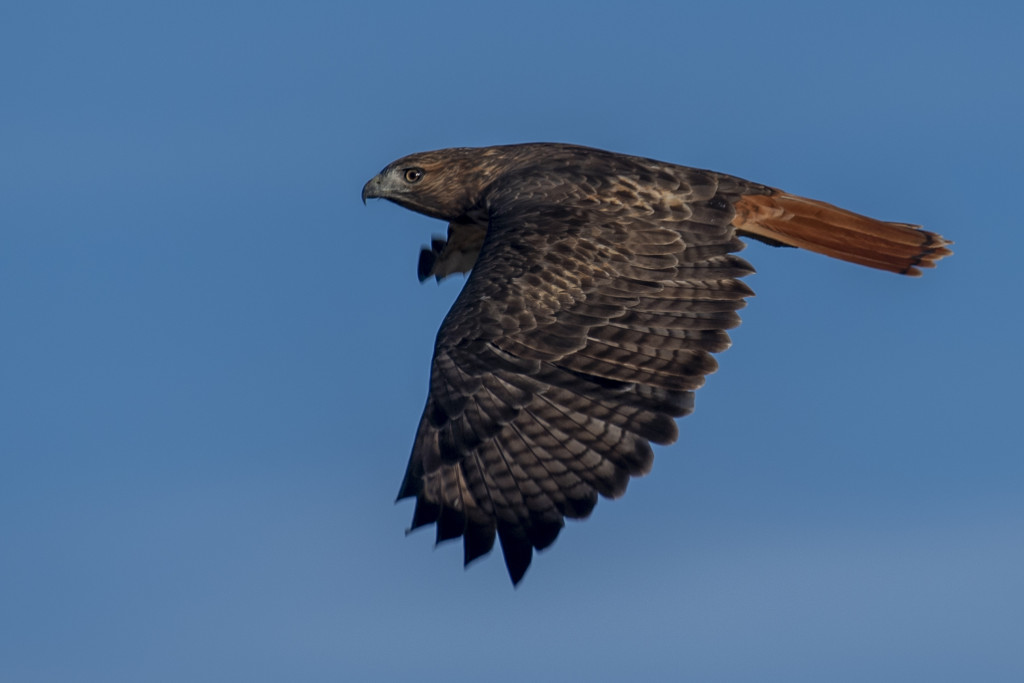
By Monica Macoubrie, Wildlife Education Specialist
Hawks are some of the most commonly seen birds in Nebraska. Often, all you have to do to find one is look up. These raptors, or birds of prey, usually perch on fence posts, overlooking branches and sometimes, at your bird feeder — any elevated spot where they can scan the ground to look for food. While each species of hawk has its own unique characteristics, they all have several features in common, such as sharp eyesight, hooked beaks and sharp talons (claws). Hawks are unusual among birds in that the female is generally larger than her mate. This sexual dimorphism can sometimes mean that a female is twice the size of the male.
Where they are different, hawks can vary significantly in size. They can be small, large, chunky, red, brown, white, spotted … and they live in a variety of habitats all across the state. But first, let’s dive into how hawks are categorized based on their size and features.
Scientifically, hawks are divided into two groups: buteo and accipiter.
Buteos & Accipiters
Buteos include medium- to large-size hawks with heavy bodies, short tails and relatively long, wide wings. These birds tend to fly by flapping slowly for a few strokes and then gliding into a series of tight circles until they gain enough altitude to soar. Common buteos in Nebraska include red-tailed hawks, Swainson’s hawks and ferruginous hawks.
Accipiters are small- to medium-size woodland hawks with slender bodies, long, narrow tails and short, stubby rounded wings. These birds are compact, which helps them maneuver around trees while pursuing prey, which is normally other, smaller birds. They fly in a consistent pattern of short, quick bursts of flap-flap-flap patterns. Common accipiters you will see in Nebraska include the sharp-shinned hawks and Cooper’s hawks.
With there being over 270 species of hawks in the world, telling them apart can be confusing. Let’s look at a few hawk species that call Nebraska home. One might be perching right outside your window at this moment.
Red-tailed Hawk
These birds are large with a red tail — hence their name. They are mostly brownish on their backs with a pale belly. Red-tailed hawks have earned the title “most prevalent hawk in North America.” If you are ever traveling in Nebraska by car along I-80, or any other highway for that matter, you have most likely seen one of these birds perched on a telephone pole or a fence post. More than likely, these birds have their eyes fixed on the ground looking for the movements of a vole, rabbit or waiting to catch a thermal to ride into the sky.
Red-tailed hawks also have that quintessential raspy scream that sounds like a true raptor. Many sound effect directors will actually substitute the red-tailed hawk’s screech for eagle noise. Eagles make more of a clacking noise, while redtails have a raspy, shrill cry.
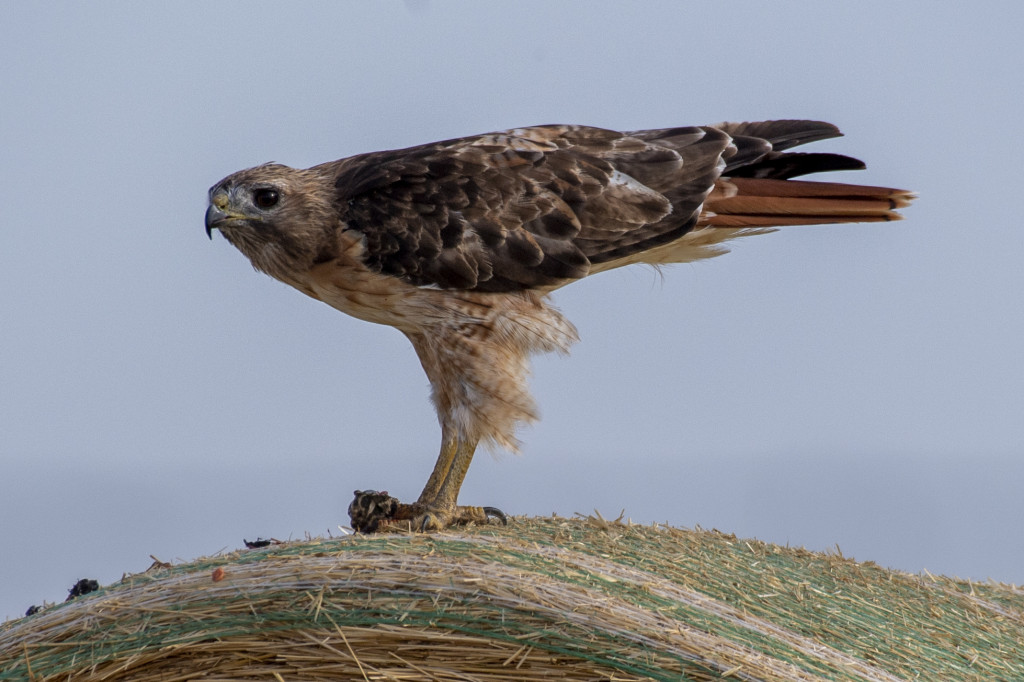
Cooper’s Hawk
Cooper’s hawks may be one of the most skillful fliers among raptors. These birds are medium size with a blue-gray head, neck, back and upper wings. They also have distinctive rusty-red, horizontal barring on their white breasts. However, Cooper’s are often confused with the sharp-shinned hawk as they have many of the same patterns and colors. This is one species of hawks that loves to hang around birdfeeders, but they aren’t checking out the sunflower seeds you’ve put out — they’re looking to prey on smaller birds that are snacking at your feeder.
Cooper’s hawks are found all over Nebraska, but they prefer forests and woodlands. Although, tree-dense suburban areas work just fine. This bird has a unique strategy for killing its prey: They capture food with their feet and then repeatedly squeeze it until it dies. They’ve even been known to hold a bird underwater until it stops moving.
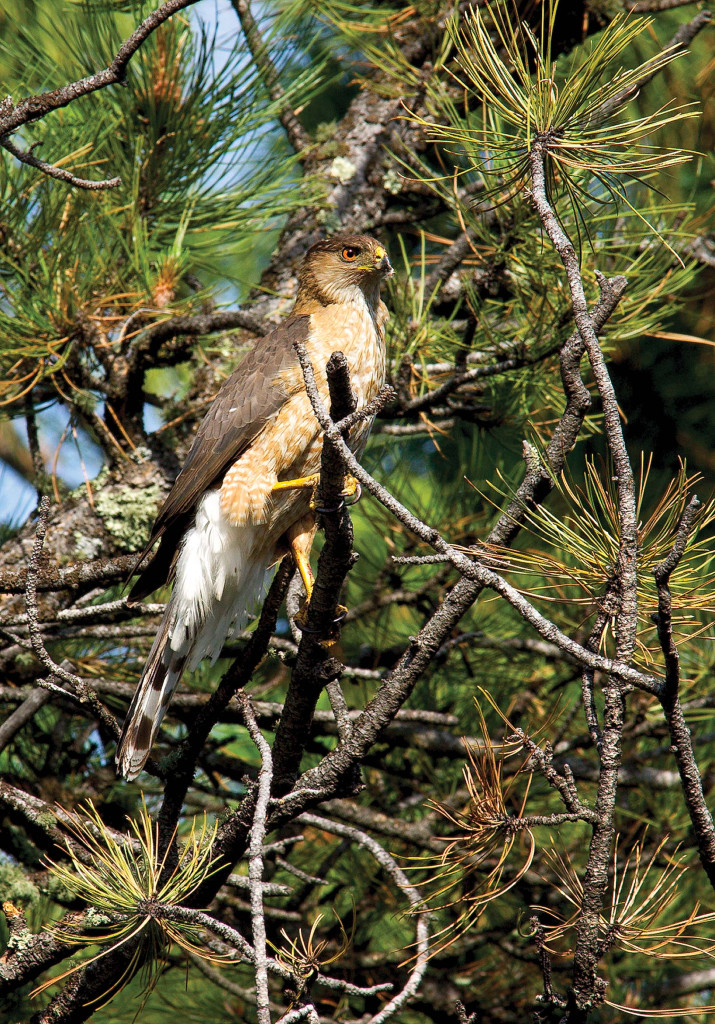
Swainson’s Hawk
The Swainson’s hawk wasn’t recognized as a species until 1832. Originally, William Swainson confused this bird with the common buzzard of Europe. It wasn’t until a French biologist corrected Swainson’s mistake and named the hawk a new species.
Swainson’s hawks have distinctively long wings with pointed wingtips. This species is easily confused with red-tailed and ferruginous hawks for their coloring and banding on the wings. However, Swainson’s hawks favor open habitats, such as native prairie and grasslands, and they eat mainly mammals and insects. When nesting and feeding chicks, they feed their young the three “R’s”: rodents, rabbits and reptiles. When they are not breeding, Swainson’s hawks will feed almost exclusively on insects, such as grasshoppers, dragonflies and crickets. These birds make an annual migration of around 11,000-15,000 miles each year to South America.
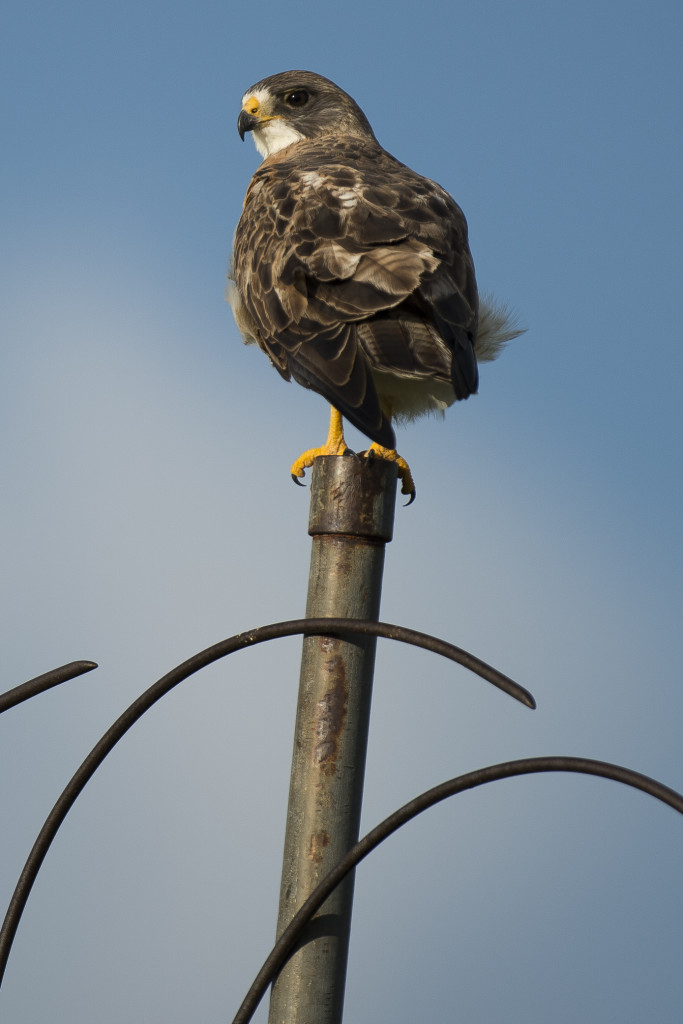
Ferruginous Hawk
The word ferruginous means rust colored and refers to the reddish coloring of the ferruginous hawk. These birds are the largest hawks in North America and are a true western species, found in wide open spaces with rocky outcrops and cliffs, where they nest. The bulky sticks of their nests are not easily woven together with sticks, so they often build on pre-existing crow or other hawks’ nests. It is said that when bison roamed the prairie, ferruginous hawks would use bison bones and hair, along with sticks and twigs, to build their homes.
The hawk’s diet is made of mostly small game, such as prairie dogs, jackrabbits and ground squirrels. These hawks will even walk, hop and run on the ground after their prey.
During courtship, ferruginous hawks pair perform displays in the air by holding their wings above their backs while soaring, after which, the male suddenly dives at the female. When they meet, they both grab each other in midair with their powerful feet.
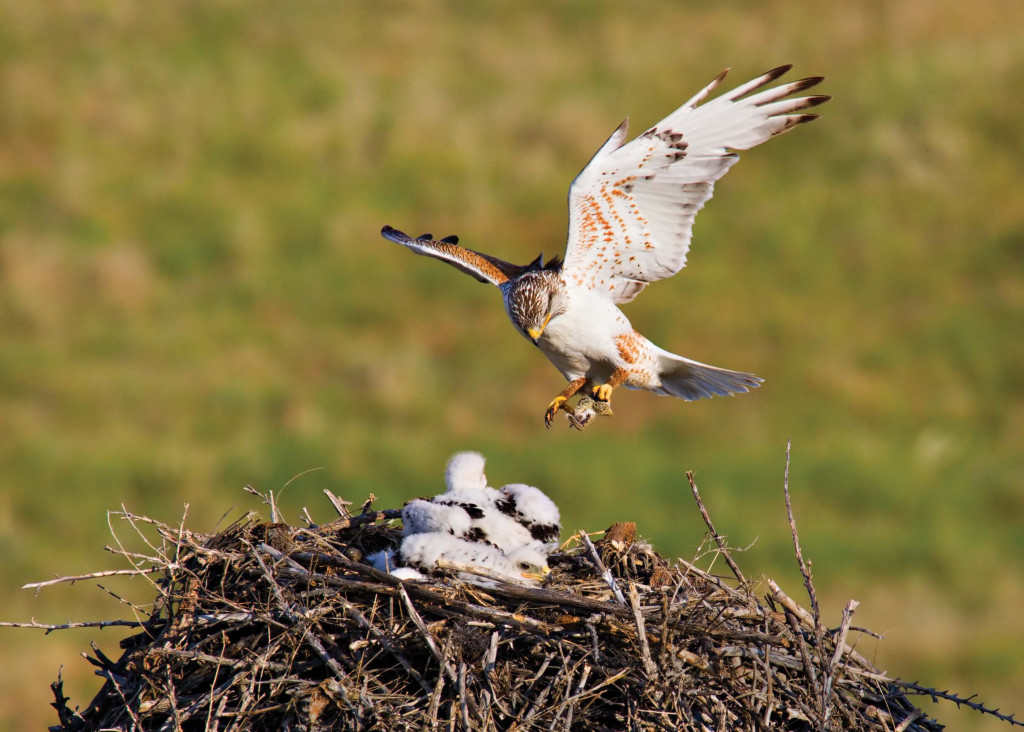
Rough-legged Hawk
If you want to spot this hawk, look outside in the wintertime. These are “chunky” raptors that will hover while facing into the wind. Rough-legged hawks look similarly to red-tailed hawks. However, one distinctive feature is that they have a longer tail than most other hawks and a smaller beak.
Rough-legged hawks spend their summer capturing prey, such as lemmings, in the Arctic tundra. While wintering in Nebraska, you may spot one of these birds in large, open areas, feeding on ground squirrels, pocket gophers and other birds. They do so by hunting from elevated perches and dropping down on prey. Rough-legged hawks occasionally feed on carrion (dead animals), and they are known to steal food from other hawks.
Hawks are fascinating birds and are more common than people think. If you want to spot one, take a road trip or keep a lookout at your feeder. They are always around.
